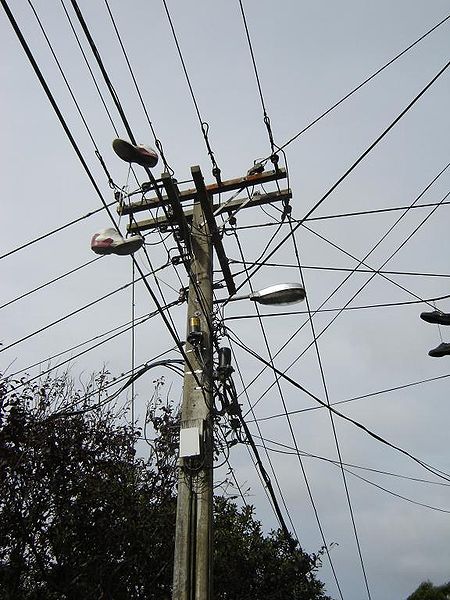Is Coalition's NBN endgame up in the air?

With his draft strategic review finally in hand, Malcolm Turnbull will now be planning the Coalition's next moves on the NBN very carefully. By connecting the dots, however, it's becoming increasingly possible to figure out just what he might be planning – and it ain't pretty.
Somewhat out of character, this time I mean that literally, and not figuratively.

Clues come from the recent proposal by Tasmania's Labor premier Lara Giddings, who recently lodged a proposal with the Commonwealth government that it roll out the fibre-optic cables supporting the fibre-to-the-node (FttN) network across existing telephone poles around the state.
It's an approach that has been tried before, successfully, in the NBN's pilot trials in Townsville. Indeed, Labor's original NBN Co plan included plans for around 25 percent of the cables to be strung up this way – although under the previous Labor government NBN Co struggled to resolve an impasse with New South Wales' Liberal government over the price of such access.
Those with slightly longer memories will remember the last major rollout of cables across power lines, when Telstra and Optus chased each other through the suburbs stringing hybrid fibre-coax cables as they went their merry way. This rollout was widely opposed by citizen action groups, which argued vociferously that the cables were unsightly intrusions of modernity into bucolic lives where telephone poles and wires were... well, they were already everywhere.
But that's a minor technical detail. The upshot is that the rollouts were eventually stopped, neighbours on network footprint boundaries had to visit each other to get access to premium TV channels, and Telstra eventually bludgeoned Optus into a pay-TV stupour.
Turnbull's real trick
Reviving the overhead rollout approach would facilitate the delivery of the fibre part of the Coalition's FttN policy – and do so in such a way that the fibre-connected nodes could literally be serviced by broadband from Heaven. So to speak.
More importantly, it would also reduce the Coalition's reliance on underground Telstra cabling ducts – already leased from the government for a tidy $11 billion and change –so that the FttN rollout could proceed more quickly and reach more properties than if the project had to continue being shoved through asbestos-riddled Telstra ducts.
Put it all together his is where it may very well all be coming together to justify Turnbull's long-held (and often-questioned) assertion that the government could access Telstra's entire copper network at no additional cost.
The only way that would be possible would be if the government could renegotiate an arrangement that would substantially reduce the actual amount of duct required – such as the almost ubiquitous use of overhead lines.
As mentioned above, Labor struggled with this – but Australia's current red-washed political landscape means the Coalition government should find state governments far more receptive to allowing NBN Co to string up its fibre on their poles.
Doing so would give the government credit in the bank, so to speak, that it could then use to fund the purchase or leasing of Telstra's copper access network (CAN). Telstra hasn't yet fixed an asking price on the value of that network, but I'd bet that with a bit of cajoling and the promise of a looser regulatory environment Turnbull might be able to get Telstra CEO David Thodey to do exactly what he wants.
If this is Turnbull's endgame, it is hardly going to be an easy innings. People power has a way of interfering with things like overhead rollouts, although there's no telling whether a politically-fatigued public would even be able to muster the grassroots willpower to make a dent in the policy.
Then there are issues such as the underlying financial position of any FttN rollout, which is becoming more and more challenging every day given the steady stream of revelations from the recent leak of NBN Co documents.
Those documents have highlighted a range of issues facing the project, including "high risk" IT systems redevelopment; the recommendation that the rollout be completed in one go and not two as the Coalition is currently planning; and challenges around the deployment of FttN cabinets and ramping up skills.
Then again, Turnbull may have an entirely different plan up his hand; all will only become clear when the findings of his Strategic Review are published. Given the potential for the Senate to force its publication, it may not be long.
What do you think? Would it work? Should it?